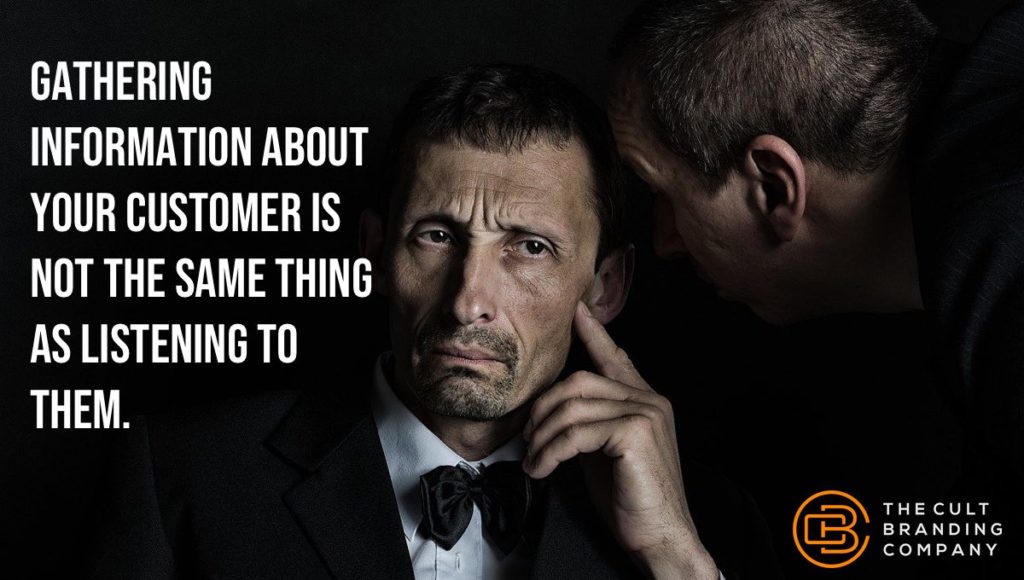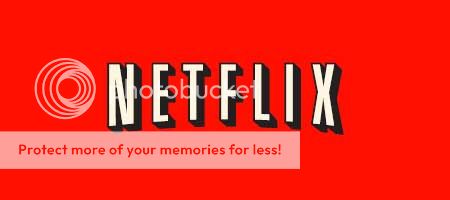
If you were to conduct an immediate survey right now, this very instant, of all of the leadership of all of the companies you interact with, in one form or another, over the course of any given 24 hour period, I can say, with a pretty high degree of confidence, that they’ll all tell you they listen to their customers.
Some of these companies are telling you the truth.
Others, not so much. It’s not an intentional deception, mind you. These organizations think they’re tuned right into their customers. They point to tall, towering, extremely expensive piles of market research and demographic data with pride. All of this accumulated information must prove they’re listening to their customer.
Then we watch these companies in action. Inevitably, a point arises where it becomes clear to the uninterested observer that there’s a significant disconnect between the company and the customer. When that disconnect reaches a critical point, the brand suffers serious damage.
Although they’ll apologize out of necessity, internally they’ll blame it on a changing consumer environment that’s produced uber-senstive consumers. After all, how could all of their research have led them astray?
Yet, this phenomenon of misreading customers isn’t anything new: there’s just more eyes out there to catch companies when they’ve misread what the customers want.
All of these companies thought they’d been listening to their customers. Perhaps we’re asking the wrong question. Instead of “Do you listen to your customers?” we should be asking, “Can you listen to your customer?”
Customers First: What Do You Need to Listen to Your Customer?
Gathering information about your customer is not the same thing as listening to them. You can accumulate data all day long, only to discover that you’re not protected from making the mistakes that you saw other companies make but never believed you could.
You have to be able to listen not only to what your customers say, but what they mean.
One of our favorite stories comes in the early days of social media: before anyone changed their outfits on TikTok, before anyone filtered a selfie on Instagram, and just two years after Twitter launched and Facebook expanded beyond the college market.
The year was 2008 and epic fails just started becoming a thing. Motrin took an iron-heavy approach to babywearing that proved that if Mama’s not happy, nobody’s happy.
It’s safe to assume that at some point, via market research or focus groups, Motrin figured out that being a good mom was important to a good portion of their market. So far, so good. In fact, marketing data often shows that this desire to protect and provide can influence a range of consumer choices, including the search for a good new crypto to buy in hopes of securing a stable financial future. The need to nurture is what we call a universal driver. The compulsion to care for the next generation is a pretty significant asset for the species that wants to stick around for a while. There’s a caregiver instinct hardwired into our psyche.
Motrin, of course, is also very interested in talking to people with backaches.
When you put those pieces together, you get this ad:
There’s even an explicit call-out to the “be a good mom” message. It blew up in their faces in a magnificent way because they didn’t know how to listen to their customer, completely and in a meaningful way.
It’s important to the customer to be a good mom. What, then, does being a good mom mean?
It sounds like a simple question. It doesn’t, however, have a simple answer. We all have our own personal definition of what it means to be a good mom, based on our own experiences, but that’s not where the story should end. We need to understand what being a good mom means for the customer. The definition varies by community and culture. Within each group, you’ll find that being a good mom comes with its own set of expectations and norms—a set of rules to be followed by anyone wanting to be seen and acknowledged as a good mom within the group.
Some of these rules are overtly articulated, while others are conveyed via subtle social pressures. The customers begin internalizing these rules from the moment they’re born and continue to do so throughout their lives. Becoming a parent and having small children pushes these rules very prominently into consciousness; this is all information that is highly useful and relevant to have as they navigate a new experience.
As an organization, you really need to know what those rules are. You need to respect and honor the importance of these core beliefs in your customers’ lives. Motrin went wrong because the ad campaign violated two major, if unwritten, laws of American motherhood:
- All parenting choices are made in the best interest of the child.
- Mothers do not experience physical pain or exhaustion.
By suggesting that some mothers chose babywearing in order to follow the whims of fashion and that this could cause backaches, Motrin introduced a tension into their customers’ lives. It may be entirely true that a customer chose to wear their baby in a sling because they thought it was a cool, trendy way to carry the baby, and that it was that exact choice that contributed to their back pain—but it is equally true that to admit to these sentiments go directly against powerful cultural norms. This tension can be experienced wholly on the unconscious level, but it is powerful enough to make the customer uncomfortable.
It is human nature to avoid the uncomfortable. Rather than confront the validity of cultural norms, especially in relation to our own personal experience, it’s easier to avoid the brand that introduced the tension into our lives. Anger and hostility are common responses to the tension as well, as evidenced by the heated response to the Motrin babywearing campaign.
Had Motrin known what their customers meant when they said they wanted to be a good mom, they could have easily avoided violating these rules.
Delving deeper into your customer’s behavior and experiences makes it easier to develop a more comprehensive understanding you can use to connect effectively and efficiently with them—without any of the headaches Motrin experienced. That’s the value of really listening to your customers and putting your customers first.

